Then I ran into the fact that I am not nearly as good a carpenter as I had hoped.
As it turns out, trying to get good flush surfaces using hinges is much more difficult than it seems. My goal had been to hinge the four panels so that they both lay flat on top of another table so they wouldn't scratch it and create a flush, continuous gaming surface.
Trying again, I decided to sacrifice the flush gaming surface for a game table that would lay flat on the bottom. So giving up on the recessed hinging, I put the hinges on the outside of the panels. This did not go as expected. Instead of getting the flat bottom at the cost of the flat top, I got neither. The table had a gap on the surface and the barrel of the hinge sticking out underneath.
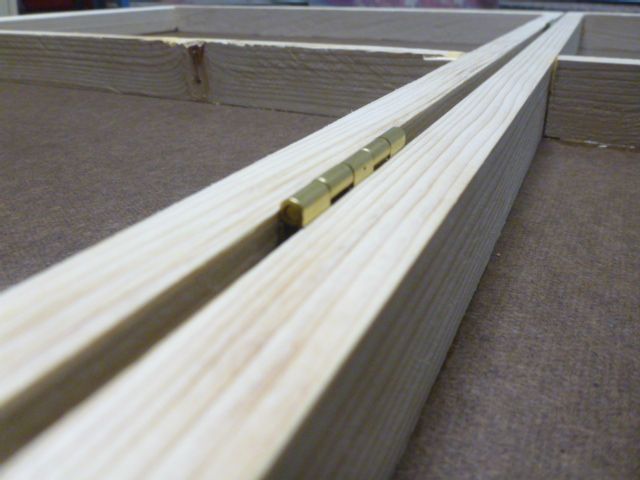 |
| Attached with neither a flat surface or a level bottom. |
Now knowing that I could not avoid having the hinge stick out at the bottom, I redid the hinging one last time.
Now the seams in the game surface are very reduced (less than .0626") but the bottom does stick out.
In my interim solution using C clamps, I have been using an old blanket to protect the kitchen table underneath my game surface. I can simply continue to use this "saddle blanket" technique while I work out he best way to level the game board and protect the kitchen table! So far I am thinking of using felt furniture pads, but first I will need to decide on whether or not the two halves will be permanently attached to each other, since I will once again have to deal with imprefect hinging.

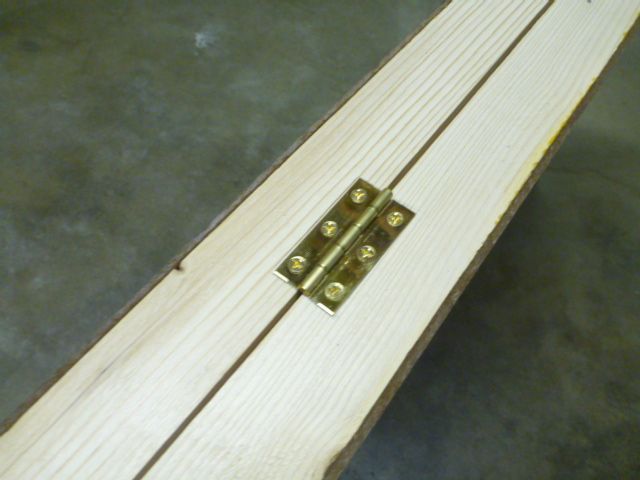
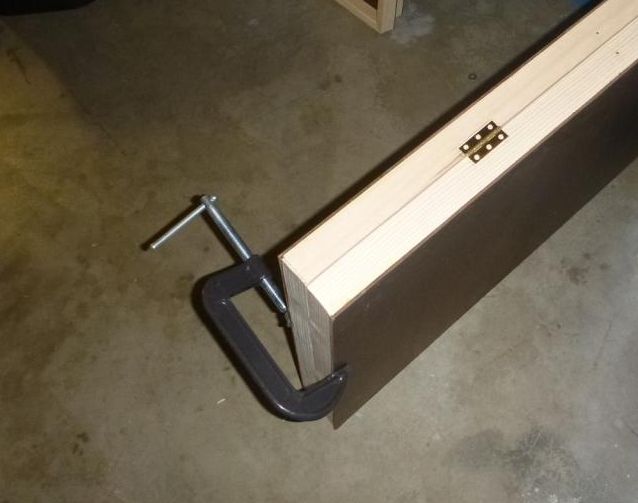
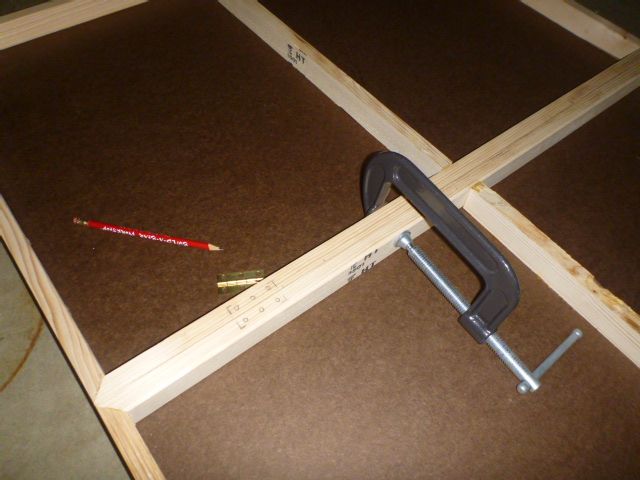
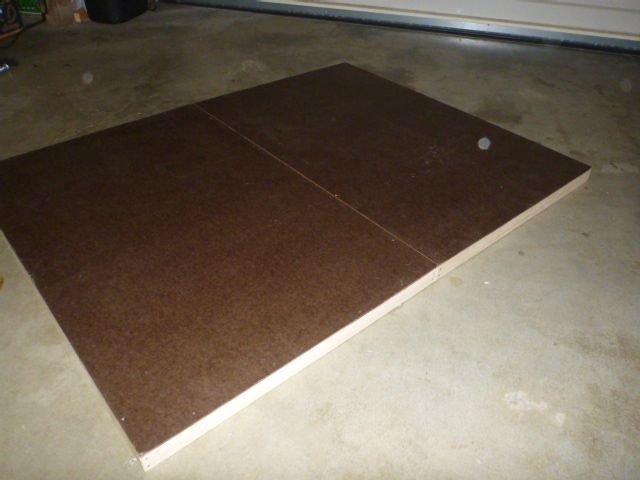
1 comment:
Would a hinge like this work? http://amzn.to/VPEhMg
I think that if you chiseled into your wood a bit such that the hinge is flat and upside-down from the Amazon picture when the table is open, it won't scratch the surface below it and will still allow you to close the table.
There are probably cheaper versions of this type of hinge, too. This was just the first google result I saw.
Post a Comment